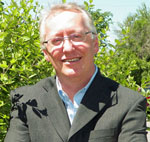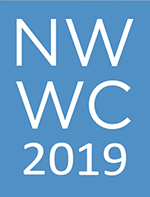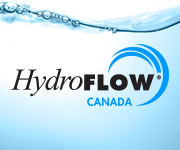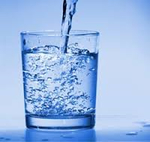 |
||||||||||||||||||
| Subscribe | Past Issues | www.cwwa.ca | Water Source Magazine | ||||||||||||||||||
|
CWWA News
I have to say I’m joining the movement to start calling this situation what it really is – a climate crisis and not just a bothersome change as the deniers prefer to downplay it. I had an old friend drop in at my place last weekend. Not only was she a big fan of Mr. Trump, but argued that climate change is a fake. She’s not alone (one of my own brothers agrees with her) and that denier sentiment is just as strong here in Canada as it is in the USA. I don’t know how after seeing that Ottawa just came out of its second 100-year flood season in 3 years. High water and flood damage is seen across the great lakes and St. Lawrence affecting Toronto and Montreal again. Unbelievable downpours stall over cities exceeding the capacity of most stormwater systems. All legitimate science points towards things getting worse before they get better…IF they can get better.
Communications expert Grant Ainsley will provide the keynote address for our conference and talk about ways we can communicate better to the media, the public and to each other. Whether we’re doing an interview with a reporter, making a public presentation, or using social media or digital advertising to communicate, we can do a better job telling our story. Ainsley’s presentation will give you a number of takeaways that you can implement right away to start telling our story the way we want it to be heard.
Federal Initiatives
The new Impact Assessment Act is now law, receiving Royal Assent on June 21, 2019 and, with some exceptions, will be brought into force at a later date. Among other things, the Bill proposes creating an Impact Assessment Agency and replacing the National Energy Board with the Canadian Energy Regulator. The final version of Bill C-69 incorporated 99 amendments - “the highest number of amendments on any piece of legislation since at least 1946”. The new Fisheries Act has also received Royal Assent. CWWA has been monitoring the progress of the Act, as our members are subject to the deleterious substance provisions as well as some permitting requirements. Among other things, the Act, which is now in force with some exceptions, restores previous measures for the protection of fish and fish habitat with respect to works, undertakings or activities that may result in the death of fish or the harmful alteration, disruption or destruction of fish habitat. In the final stages a proposed "deeming provision" that deemed water flow (previously understood to be a component of habitat) to be fish habitat itself was removed. The Senate Committee also removed the phrase "water frequented by fish" in the definition of fish habitat. That definition is now limited to areas "on which fish depend directly or indirectly to carry out their life processes, including spawning grounds and nursery, rearing, food supply and migration areas". The Government of Canada recently announced it is investing $89.7 million over five years to modernize the country’s water-monitoring services. Among other things, the funding will go towards expanding Canada’s National Hydrological Service research on the impacts of climate change on freshwater resources.
Health Canada has published a new consultation document on aluminum in drinking water. The document recommends a maximum acceptable concentration (MAC) of 2.9 mg/L (2900 μg/L) is proposed for total aluminum in drinking water, based on a locational running annual average of a minimum of quarterly samples taken in the distribution system. An OG value of 0.050 mg/L (50 μg/L) is proposed for total aluminum to optimize water treatment and distribution systems. Provincial News
On July 5, 2019, the governments of Canada and Ontario released a draft of a new Canada-Ontario Agreement on Great Lakes Water Quality and Ecosystem Health to coordinate actions to protect water quality in the Great Lakes. The new draft Agreement is designed to advance action on tackling harmful and nuisance algae in Lake Erie and cleaning up the Great Lakes Areas of Concern. It also includes actions for improving wastewater and stormwater management and reducing pollution, including a new focus on road salt and plastic pollution. A final agreement is expected in 2020. Access the draft agreement in the July 6 edition of Canada Gazette Part 1. Snippings & Clippings
Water Online In a new survey of the sub-seafloor off the U.S. Northeast coast, scientists have made a surprising discovery: a gigantic aquifer of relatively fresh water trapped in porous sediments lying below the salty ocean. It appears to be the largest such formation yet found in the world. The aquifer stretches from the shore at least from Massachusetts to New Jersey, extending more or less continuously out about 50 miles to the edge of the continental shelf. If found on the surface, it would create a lake covering some 15,000 square miles. The study suggests that such aquifers probably lie off many other coasts worldwide, and could provide desperately needed water for arid areas that are now in danger of running out. Water Canada For more than a billion people around the world, running water comes from “intermittent systems” that turn on and off at various times of the week. A new paper by Professor David Taylor proposes a model to explain why and how these systems come to be. Taylor also looks at how these systems fit into the global challenge of meeting international targets for human development and safe drinking water. Clean Tech Canada The federal government’s carbon pricing scheme is constitutionally sound and has the critical purpose of fighting climate change, Ontario’s top court ruled in a split decision on Friday. Digital Insights Unfortunately there are an abundance of examples of companies which focus upon and often succeed at establishing a strong corporate culture after and usually due a crisis. Samsung, Wells Fargo and Volkswagen are only recent examples. We’ve all learned the lesson that a crisis can bring out the best in us and inspire us to do better. Simple, not easy. The better way to learn these lessons is to pay close attention to companies who successfully navigate crisis and learn from their examples – what had they done to proactively build and maintain their company’s culture to avoid or mitigate the crisis? The Government has concluded that cobalt and soluble cobalt compounds meet the toxicity criteria under paragraph 64(a) of the Canadian Environmental Protection Act, 1999 (CEPA) and should be added to the List of Toxic Substances in Schedule 1. According the the Notice sources of release of cobalt to the environment from manufacturing involve rubber, chemicals, paints and coatings, plastics (polyester resin), fertilizers and animal feed. In addition, the following sectors have the potential to release cobalt as a by-product: electricity (power generation), petroleum refining, oil sands, pulp and paper mills, electrical and electronic equipment, waste management, wastewater and biosolids. However, the major contributors to releases of cobalt into the environment are the mining, smelting and refining of base metals, such as copper and nickel. A survey of NPRI data and website users is being conducted to gather information on their data needs and experiences with the inventory and website. The results will be used to make both the data and the website easier to understand and navigate. The survey will take approximately 15 minutes to complete. |
||||||||||||||||||




